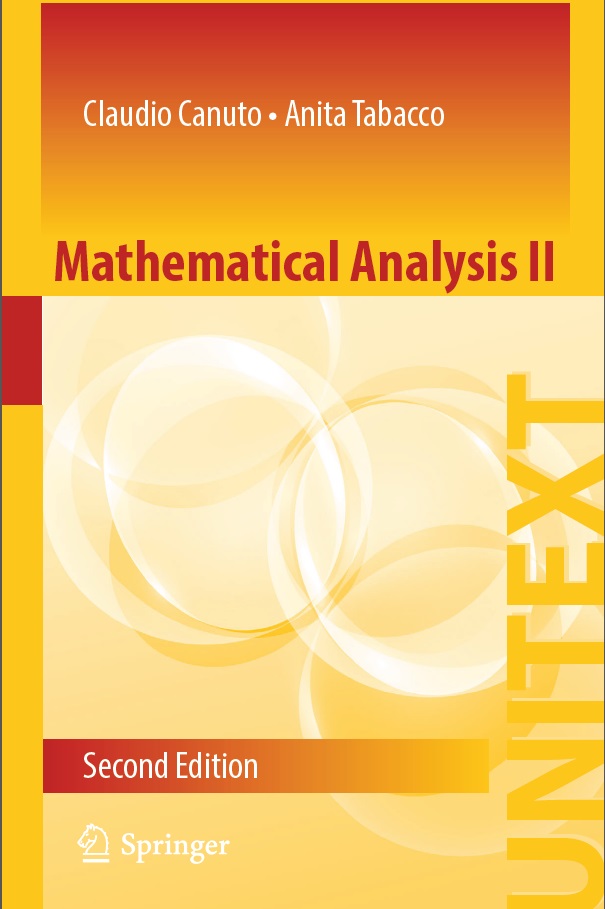-
Амалий математика ва информацион технологияларнинг долзарб муаммолари-Ал Хоразмий 2009
Джураев Т. Дж.,Matematika, -
-
-
Matematika,
-
-
-
-
Амалий математика ва информацион технологияларнинг долзарб муаммолари-Ал Хоразмий 2009
Джураев Т. Дж.,Данный сборник содержит труды участников международной конференции "Актуальные проблемы прикладной математики и информационных технологий аль-Хоразми 2009", которая состоялась 18-21 октября 2009 года в Национальном Университете Узбекистана".
-
"Matematik fizika tenglamalari" fanidan masalalar toplami
Salohiddinov M.,Mazkur masalalar to'plami respublikamizda faoliyat ko'rsatayotgan universitetlarning matematika, amaliy matematika va informatika, mexanika va fizika yo'nalishlari uchun "Matematik fizika tenglamalari" fani dasturiga moslab yozilgan.
-
Высшая математика в упражнениях и задачах
Данко П. Е Попов А.Г,Содеожание Части охватывает следующие разделы программы
-
Математик анализ курсидан мисол ва масалалар тўплами
А. С Садулаев , Х.Мансуров,Ушбу китобда математикадан мисол ва масалар берилган
-
Mathematical Analysis I
Claudio Canuto,The recent European Programme Specifications have forced a reassessment of the structure and syllabi of the entire system of Italian higher education, and an ensuing rethinking of the teaching material. Nowadays many lecture courses, especially rudimentary ones, demand that students master a large amount of theoretical and practical knowledge in a span of just few weeks, in order to gain a small number of credits. As a result, instructors face the dilemma of how to present the subject matter. They must make appropriate choices about lecture content, the comprehension level required from the recipients, and which kind of language to use. This textbook is meant to help students acquire the basics of Calculus in curricula where mathematical tools play a crucial part (so Engineering, Physics, Computer Science and the like). The fundamental concepts and methods of Differential and Integral Calculus for functions of one real variable are presented with the primary purpose of letting students assimilate their effective employment, but with critical awareness. The general philosophy inspiring our approach has been to simplify the system of notions available prior to the university reform; at the same time we wished to maintain the rigorous exposition and avoid the trap of compiling a mere formulary of ready-to-use prescriptions. From this point of view, the treatise is 'stratified' in three layers, each corresponding to increasingly deeper engagement by the user. The intermediate level corresponds to the unabridged text. Notions are first presented in a naive manner, and only later defined precisely. Their features are discussed, and computational techniques related to them are exhaustively explained. Besides this, the fundamental theorems and properties are followed by proofs, which are easily recognizable by the font's colour. At the elementary level the proofs and the various remarks should be skipped. For the reader's sake, essential formulas, and also those judged important, have been highlighted in blue, and gray, respectively. Some tables, placed both throughout and at the end of the book, collect the most useful formulas. It was not our desire to create a hierachy-of-sorts for theorems, instead to leave the instructor free to make up his or her own mind in this respect.
-
Mathematical Analysis II
[],Some graphical conventions are adopted: definitions are displayed over grey backgrounds, while statements appear on blue; examples are marked with a blue vertical bar at the side; exercises with solutions are boxed (e.g., 12. ). This second edition is enriched by two appendices, devoted to differential and integral calculus, respectively. Therein, the interested reader may find the rigorous explanation of many results that are merely stated without proof in the previous chapters, together with useful additional material. We completely omitted the proofs whose technical aspects prevail over the fundamental notions and ideas. These may be found in other, more detailed, texts, some of which are explicitly suggested to deepen relevant topics. All figures were created with MATLABTM and edited using the freely-available package psfrag. This volume originates from a textbook written in Italian, itself an expanded version of the lecture courses on Calculus we have taught over the years at the Politecnico di Torino. We owe much to many authors who wrote books on the subject: A. Bacciotti and F. Ricci, C. Pagani and S. Salsa, G. Gilardi to name a few. We have also found enduring inspiration in the Anglo-Saxon-flavoured books by T. Apostol and J. Stewart. Special thanks are due to Dr. Simon Chiossi, for the careful and effective work of translation. Finally, we wish to thank Francesca Bonadei – Executive Editor, Mathematics and Statistics, Springer Italia – for her encouragement and support in the preparation of this textbook.
-
Геометрический анализ и его приложения
А.Н Конбрашов,Сброник содрежит тезисы докладов и научных собщений участников международой школы-конференции посвященные различным вопросам геометрический теории функций дифференциальных уравенений на многообразиях также их приложениям.







